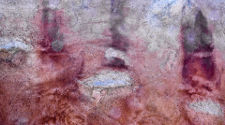
The use of cement and concrete as fracture grouting or as tunnel seals in a geological disposal facility for radioactive wastes creates potential issues concerning chemical reactivity.
The elevated pH (>11) of pore fluids in such materials can lead to the instability of minerals in the host rock formation, increased solubility, and changes in the physical properties of the engineered barrier, such as porosity or permeability.
The Long-term Cement Studies (LCS) project is a collaboration between Posiva, JAEA, NDA and Nagra aimed at increasing the understanding of these high-pH cement interaction effects in the repository near-field and the geosphere, in order to develop confidence in the likely future system behaviour. An emphasis is placed on in-situ field experiments, conducted at the Grimsel Test Laboratory in the Swiss Alps, with more realistic boundary conditions and longer time scales. This is supported by modelling work.
In the first stage of this project, Quintessa has been working in support of the NDA to model cement hydration reactions and the advective flow of hyperalkaline fluid through a column of fractured rock. The multiphysics code QPAC, along with its geochemical reactive transport module, was used to produce models that can accurately replicate the experimental results of these lab-scale studies. The next stage will be to apply the models to large spatial and temporal scale situations.